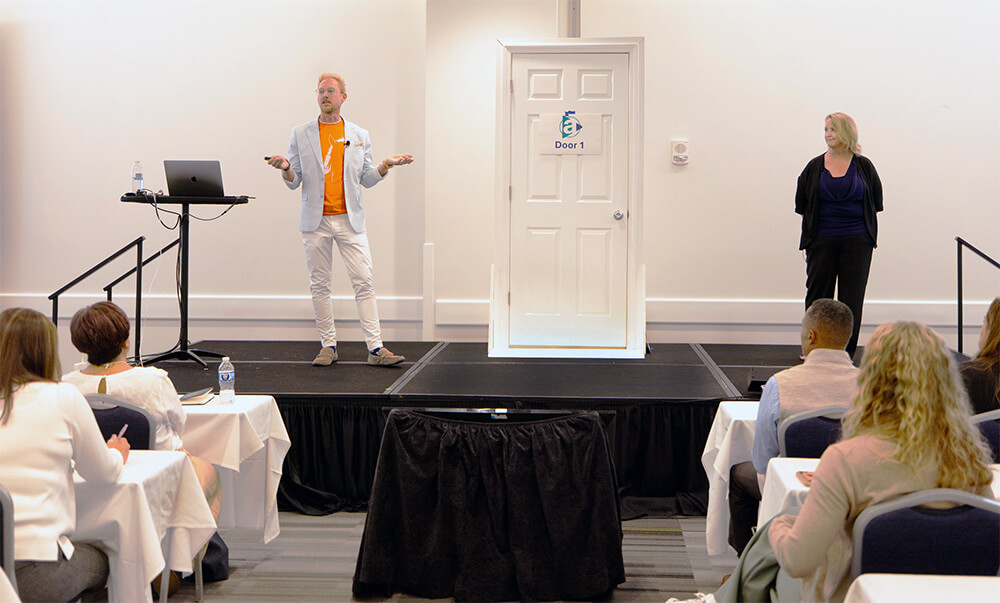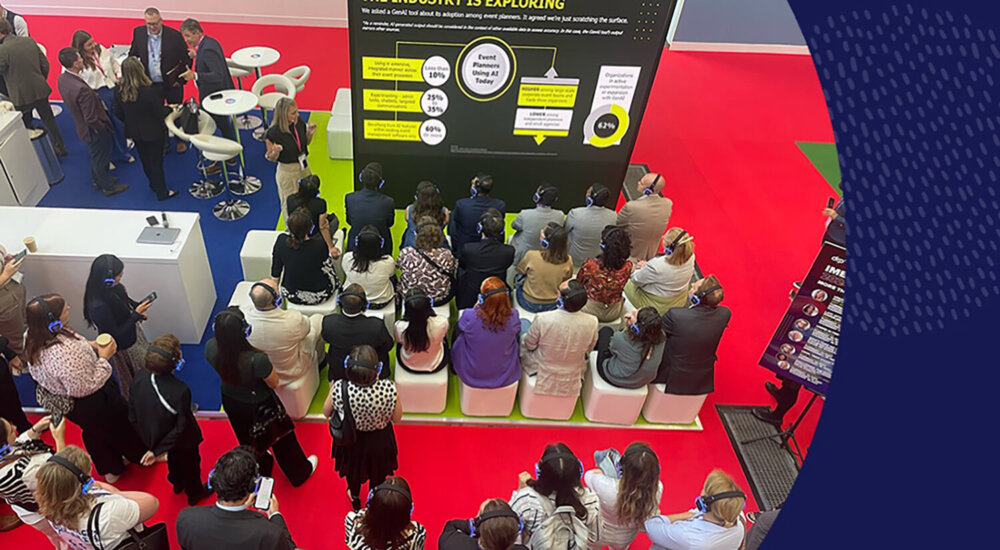
At the 2025 Maritz Activate conference, attendees were invited to do more than just learn about artificial intelligence, they were challenged to rethink it. In a dynamic and thought-provoking session led by Rob King, Director of Emerging Technology, and Alyssa Shipley, Director of Brand Events at Maritz, the audience was taken on a journey through three metaphorical doors, each representing a deeper level of AI-powered efficiency.
Setting the Stage
Alyssa and Rob kicked off the session by sharing their personal and professional passions for AI. Alyssa co-leads an internal pilot program aimed at transforming event management through artificial intelligence. In Rob’s role he has the opportunity to explore, experiment and educate on newer technologies like AI.
This session was designed not as a lecture, but as an interactive exploration of what AI can truly unlock.
The Three Doors of Efficiency
Rather than focusing on AI theory or basic use cases, Rob and Alyssa introduced a framework that breaks down efficiency into three progressive levels:
Door 1: Faster
This is where most people begin. AI helps users complete routine tasks more quickly, writing emails, summarizing meeting notes, generating proposals, etc. It’s practical and effective, but it’s also the baseline. The challenge of a mindset only focused on fast is that you’re still doing the same tasks, just faster. As Rob noted, speed is no longer a luxury; it’s table stakes. Door 1 is helpful, but it’s not differentiating.
So how do you move beyond speed and into smarter AI use? Here are some practical ways to level up your approach:
- Be specific in your prompts, say exactly what you want.
- Refine your prompt if the first answer isn’t quite right.
- Ask for sources: “Where did this data come from?”
- Use natural language, talk to AI like you would a colleague.
- Keep prompting and stick with it. The more you use it, the better you get.
- Make it easy to access, download AI apps or add them to your toolbar.
These tips help unlock the next level.
Door 2: Smarter
Using the techniques above opens Door 2, where AI becomes a strategic advantage. This is how you begin using AI differently to gain time back in your day and start to feel the efficiency. The goal is to enhance collaboration, preparation and strategic impact, without spending more time.
Door 2 is where AI helps you shine.
- In sales, AI helps craft personalized proposals with storytelling that resonates.
- In sourcing, it acts as an analyst, flagging risks and surfacing insights.
- In event design, it tailors agendas, optimizes layouts and builds smart checklists.
This level of AI thinking gives professionals across industries a strategic edge, helping them stand out.
But here’s the catch: when everyone uses AI to appear smarter, smart becomes the new average. To stand out, you need to be strategic, not just smart.
Ask yourself: Could AI help me do something I couldn’t do before?
The biggest breakthroughs happen when AI enables you to do something new and different.
Door 3: Impossible
This leads us to the final door, where transformation happens. Door 3 is about creating value that didn’t exist before.
- For strategy, you no longer need to rely solely on last quarter’s data. AI can analyze current market signals, track competitor moves, and surface insights that help you stay ahead. And those cold leads? AI can identify patterns behind why they went cold and suggest new messaging, or even the best time to re-engage.
- In sourcing, AI becomes a trend-spotting engine. It scans purchasing data with precision to uncover patterns that fuel smarter, faster decisions. It can also help visualize outcomes in a way that’s easy to share and act on or generate sourcing briefs tailored to your audience.
- For meeting and event management, AI steps into the role of creative partner. Give it a theme or a vibe and it can generate fresh ideas for formats, activations or content that aligns with your audience. It can also map the attendee journey, from registration to post-event follow-up, and enhance accessibility by translating materials and suggesting inclusive design elements.
Door 3 thinking moves beyond incremental improvement. It’s about transformation. It’s about delivering experiences that make clients and stakeholders say, “How did you even think of that?”
From Mindset to Mastery
This is your new mindset for AI efficiency. These are the three questions to ask yourself that can change everything.
- Could AI help me do this faster? (Basic level)
- Could AI help me do this better (Strategic level)
- Could AI help me do something impossible? (Transformation level)


